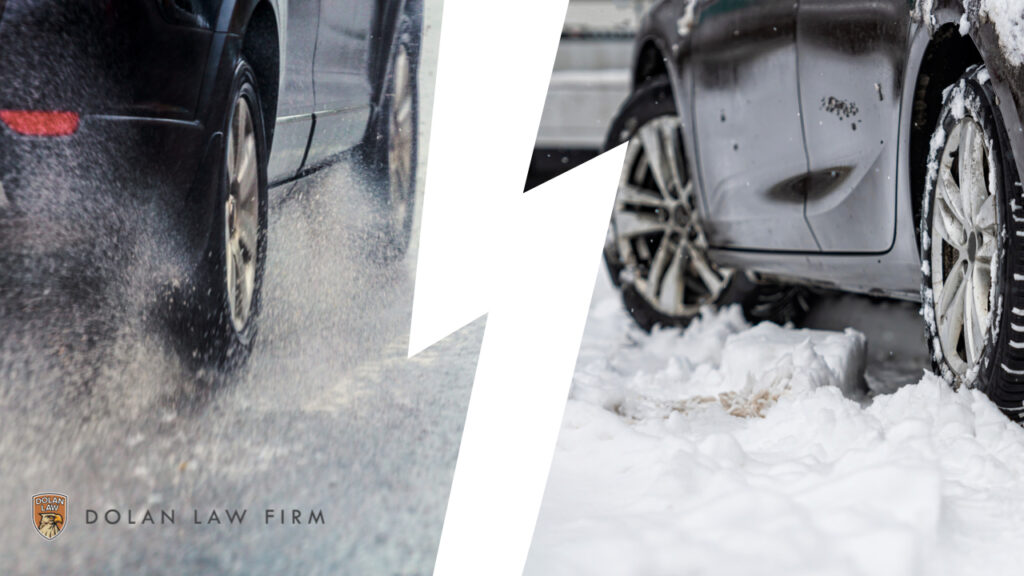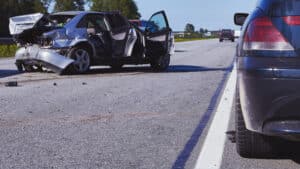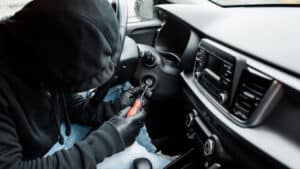This week’s question comes from Holly H. in Berkeley, who asks: “My wife was traveling on a roadway which has a 45 mile an hour limit. It had been raining very heavily for several days but the weather had cleared for at least 4 hours. She was driving about 30 and everything was fine. As she came around a bend, there was an a huge lake of water in her lane. Her car lost traction, she couldn’t break or steer, and she crossed into the other lane colliding with another car. Thank God no one was seriously injured but someone could have been killed. After the collision a nearby neighbor came out and said that there was a storm drain which had been backing up there all year and despite calls to the Public Works Department nothing had been done and this was the third accident there this year. What rights do people have when the drains are not being maintained and they are harmed?”
Holly,
According to the National Highway Traffic Safety Administration, the second greatest factor in causing collisions (2 percent) is environmental conditions such as rain, snow, etc.(The greatest factor, 94 percent, is human error.)
What you describe is the phenomena known as “hydroplaning.” On wet or flooded pavement hydrodynamic pressure increases as the speed of the vehicle increases eventually leading to the tire losing contact with the roadway. There are two types of hydroplaning: 1) viscous hydroplaning or 2) dynamic hydroplaning. Viscous hydroplaning is a problem associated with low speed operation on pavements with little or no texture. We see this frequently in rear end collisions during or following rainy conditions. Dynamic hydroplaning occurs in situations with a more significant depth of water as a water wedge is driven between a moving tire and the pavement surface causing a complete separation of tire and roadway. What you describe is full dynamic hydroplaning, a serious life and safety hazard, causing a total lack of control over steering and braking.
Under California Law a government entity: city, county, or state, can be held liable for a dangerous condition of public property if they fail to maintain the roadways, and drainage, in a reasonably safe condition. The condition must cause more than a trivial risk of harm of the type that was suffered and the entity needs to have actual or constructive knowledge of the condition with sufficient time to remedy it and have failed to do so.
Actual knowledge is when they know about the condition by seeing it themselves, being informed by others, or when they themselves cause the condition to exist. Constructive notice is when the condition, and its dangerousness, should be apparent to them by a reasonable inspection system or, perhaps, in this situation if they have had to come clean this drain numerous times or they are aware of numerous accidents happening under the same conditions.
I have handled many similar cases as the one you present here. Most involve known flooding areas, improperly constructed roadways and/or blocked or broken drains. Unfortunately, these conditions can often prove deadly.
It appears that the entity had actual notice based on the neighbor’s complaints. Additional evidence of notice can be obtained by obtaining DPW documents pertaining to the drainage at that site.
A usual defense is that the driver was traveling too fast for the conditions (Veh. Code 22350). Given the break in the rain, your wife’s reduced speed, and the fact that the pool of water was around a corner, this defense could probably be surmounted.
My best advice and winter driving tips to everyone:
Dos:
- Do Slow Down
- Do Wear Your Seatbelt
- Do Fill You Gas Tank or Keep your EV charged to its advised limit
- Do remove all snow and ice from your vehicle, in higher elevations
Don’ts:
- Don’t use handheld devices
- Don’t use Cruise Control
- Don’t drive under the influence of alcohol/drugs
Prepare Your Vehicle:
- Check your headlights
- Check your Brake lights
- Check your Windshield Wipers
- Check your windshield washer fluids
- Check your tires for tread depth and proper tire inflation
Christopher B. Dolan is the owner of the Dolan Law Firm. We serve clients throughout the San Francisco Bay Area and California from our San Francisco, Oakland, and Los Angeles offices.
To read more articles on our blog, visit us at Dolan Law Firm Blog. Email any questions or topics for future articles to: help@dolanlawfirm.com. Each situation is different, and this column does not constitute legal advice. We recommend you consult an experienced trial attorney to understand your rights entirely.










